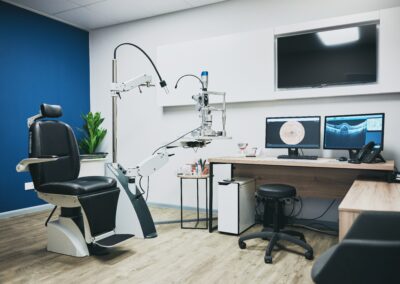NHSX’s Digital playbooks ‘have been developed to support clinical teams to reimagine and redesign care pathways by showcasing tried and tested technologies to solve real-world problems.’ They highlight challenges faced by people working in different NHS organisations and share solutions and best practices.
Our project in County Durham and Darlington NHS Foundation Trust features in the NHSX Dermatology Digital playbook. Read the full case study on the NHSX website or we have replicated it below:
Teletriage service for two-week wait referrals
In order to more effectively manage the increasing number of dermatology two-week wait skin cancer referrals (150 a week) a teletriage service was developed by County Durham and Darlington NHS Foundation Trust (CDDFT) for all 2-week wait referrals to dermatology and plastic surgery.
Situation
The teletriage service required the primary care teams to be able to take good quality photos securely and send them securely via e-RS. Digital solutions were required to ensure that GPs had rapid access to cameras which could securely take patient images and allow easy transfer to the patient record and the e-Referral Service (e-RS), ideally using their own personal mobile device.
Aspiration
The aim was to make the two-week wait triage service accessible for all patients requiring urgent appointments for squamous cell carcinoma and melanoma and to streamline the patients’ skin cancer referral pathway.
Solution and Impact
It was decided that clinical commissioning groups (CCGs) would provide all practices with a dermatoscope and access to a secure smartphone app to take photos.
All GP practices were provided with an iPhone 10 with a Heine 20 dermatoscope and bracket.
Practices in CCGs using Consultant Connect technology were provided access to the Consultant Connect PhotoSAF App to download. Each GP was asked to register for a unique account with Consultant Connect using their NHS email address and a unique password.
Subject to patient consent, for each two-week wait referral the GP or other practice staff take three photographs of the lesion (dermoscopic, macroscopic and localising images). The images can then be downloaded to the patient’s primary care record from the Consultant Connect web portal via a secure login and password combination, either by the GP or any authorised member of their team. The three photos are then uploaded into e-RS with the two-week wait referral letter.
All two-week wait referrals made using this pathway are booked into a virtual clinic (CAS) managed by the CDDFT patient booking team. The responsible consultant logs into e-RS every day to check for new referrals. The photographs allow the dermatology team to triage the patient effectively or redirect them to plastic surgery or maxillofacial surgery. The dermatology team identifies poor-quality images and this data is shared by the Trust with CCGs to identify practices where further training may be required.
Roadshows and time-out sessions were carried out across five localities to train GPs and practice staff to use the equipment and take high-quality photos. The Trust agreed to change job plans to allow dermatologists adequate time to triage the referrals.
The Consultant Connect App is also increasingly used by GPs to send images to the Trust via e-RS Advice and Guidance.
Functionality
The Consultant Connect information governance (IG)-secure platform makes it easy for clinicians to take photos with the Consultant Connect App and attach them to referrals sent via the NHS e-Referral Service. Images and notes are stored automatically in an IG secure cloud (not on the phone). Images and a PDF summary can be downloaded by clinicians or administrative staff from photosaf.com.
Scope
The Consultant Connect PhotoSAF app:
- is designed for clinicians to share images
- allows the clinician to add the NHS number and accompanying comments to the images
- stores images securely and prevents unauthorised people from accessing the images on the mobile phone
- automatically compresses each image to 5MB or less to comply with e-RS file size limits





